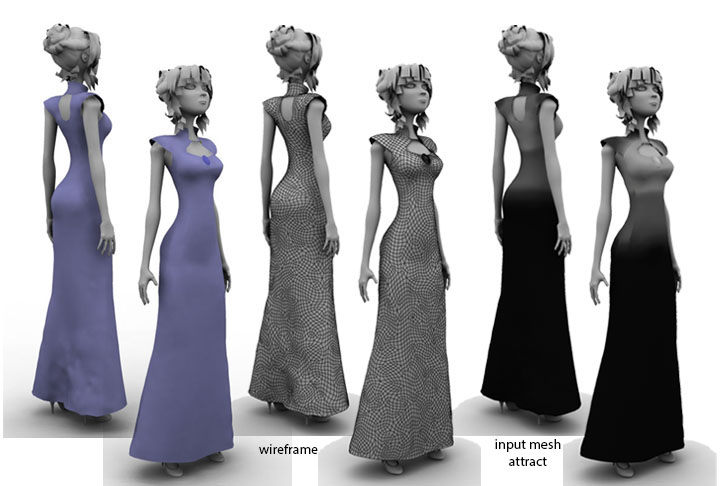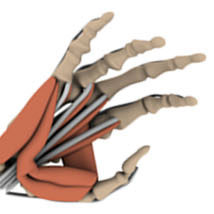
I modeled and rigged this nCloth dress for Ashley Trawick’s film Fairest of Them All. The character was modeled by Parrish Baker. I used the software Marvelous Designer to model the dress, and Autodesk Maya to adjust and rig the dress. The most useful book for learning about nCloth was The Art of Rigging by Kirian Richie.
Some notes I learned which might be useful to other riggers:
- Well laid out and evenly scaled UVs are key.
- Input Mesh Attract is an attribute in the nCloth shape node that actually brings you back to your original, undynamic model. If you bind your original object to joints, you can use the Input Mesh Attract attribute to retreive the influence of that original binding.
Even cooler is the Input Mesh Attract Map. You can paint a black-and-white map that controls where your dress is dynamic, and where it’s controlled by joints. So, for Alicia, the black areas are completely dynamic (her sirkt), the white areas are completely undynamic (her button and gemstone broach), and the grey areas are in-between.
- A collide strength map on the rigid collider shape node means that Alicia’s arms can freely pass through her dress. That’s pretty useful to an animator.
- The space scale attribute on the nucleus node should be connected to the global scale.
- Quality settings can be keyed on a frame-by-frame basis, wherever the scene has a problem. For Alicia, the quality adjustment I’ve made the most is the substeps. If the animation is moving too quickly and pose changes are too great between frames, adding substeps adds calculations between the frames, almost like adding extra frames without changing the animation timing.
- Thickness: I don’t even know why this attribute exists, except to make nCloth look ugly at its default settings. Turn your thickness setting down to 0.001 on both your cloth and your rigid collider.
- Gravity: like real life gravity, you can start at 9.8 m/ss.
